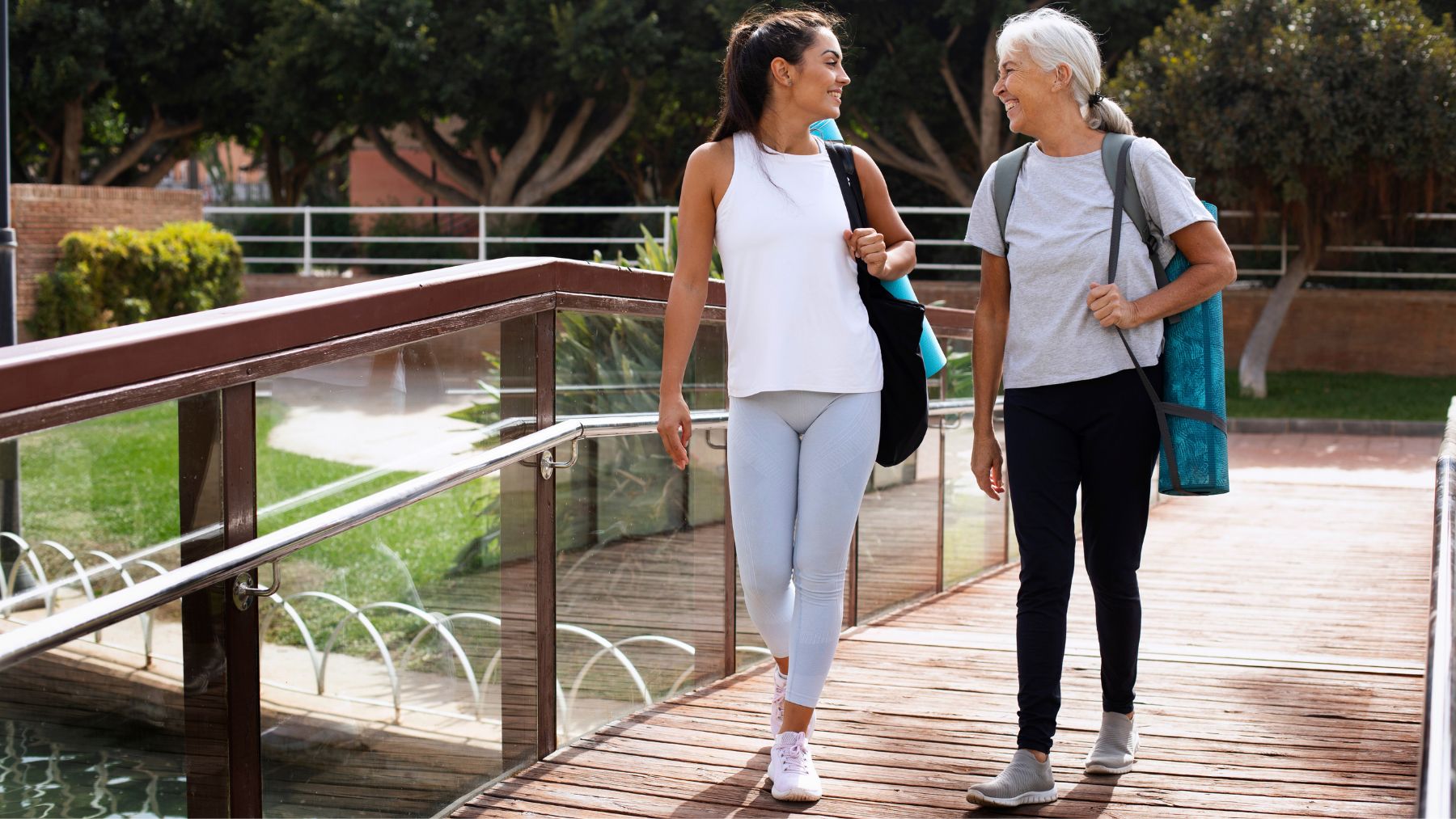Swimming, dancing, or yoga are great ways to stay fit later in life and are usually some of the most recommended. Recently, National Geographic reported a different exercise for stability and balance that’s much simpler and can be done almost anywhere.
The exercise is walking backward. This small change in direction engages different muscles, challenges coordination, and stimulates the brain in ways forward walking does not. Let’s explore how backward walking works, what the science says about its benefits, and how seniors can safely start adding it to their routine.
Walking backward builds balance for seniors over 60
Walking backward may sound unusual, but research shows it targets areas that tend to weaken with age, including the hips, glutes, and thighs. By strengthening these muscles, seniors can reduce joint strain during everyday activities like climbing stairs or getting up from a chair. Janet Dufek, a kinesiology researcher, explains that the movement can also ease lower back pain by engaging the hamstrings and quadriceps.
The benefits extend beyond muscle strength. Harvard psychiatrist Ashwini Nadkarni notes that reversing your usual walking pattern forces the brain to process movement differently, boosting spatial awareness and memory. That extra brain activity strengthens neural pathways that support balance and coordination. For older adults, this kind of stimulation can help protect against cognitive decline while reducing the risk of falls.
Proprioception—the body’s ability to sense its position in space—also improves with backward walking. Seniors who practice it regularly may notice they react faster to slips or uneven ground, making them steadier on their feet. On top of that, studies show that it burns about 40% more calories per minute than walking forward at the same pace. That means the exercise supports both cardiovascular health and weight management.
Tips for seniors to get started with this exercise safely
While walking backward is accessible and low-impact, safety should come first. Seniors can get more benefits from it and minimize risks by following a few key steps:
- Start slow on a treadmill: Hold onto the handrails and set the pace low until the movement feels natural.
- Choose a safe outdoor space: A flat, open area like a park path or empty track is best. Avoid crowded or uneven sidewalks.
- Have support nearby: Walk with a friend, use walking poles, or stay close to a railing or wall when practicing outside.
- Wear the right shoes: Supportive sneakers with good grip reduce the risk of slipping.
- Keep sessions short at first: Begin with about five minutes and gradually increase the time as balance and confidence improve.
- Pay attention to signals from your body: Stop if you feel dizzy, strained, or off balance. Consult your doctor before starting, especially if you have arthritis, knee problems, or cardiovascular conditions.
Backward walking may feel awkward in the beginning, but most people adapt quickly. Over time, seniors often notice stronger hips, improved posture, and more confidence in daily movement. With its combination of benefits, it’s one of the simplest and most effective ways for older adults to stay active and independent.

